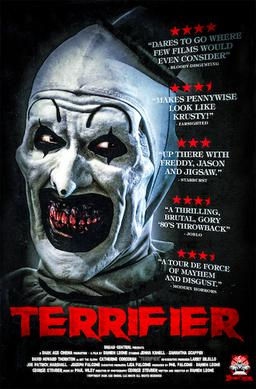Dracula (1979) review
- Jeremy Kelly
- Oct 16, 2021
- 4 min read
16. Dracula (1979)
Directed by: John Badham
Produced by: Marvin Mirisch, Walter Mirisch
Screenplay by: W.D. Richter
Starring: Frank Langella, Laurence Olivier, Donald Pleasence, Kate Nelligan

Bram Stoker’s “Dracula” novel has seen many big and small screen film adaptations over the years; I’ve reviewed some of the most famous ones before, but one that seems to have been forgotten about is the 1979 Universal remake starring Frank Langella as Count Dracula. Much like the 1931 Béla Lugosi classic, it’s more based on the Hamilton Deane play, which had recently seen a Broadway revival that earned Langella a Tony Award nomination. It has more of an epic horror romance vibe—it even has the tagline “A Love Story”—and it results in another excellent adaptation thanks to its Gothic production design and believable chemistry from the cast.
Unlike most other versions, the movie actually opens with Dracula traveling from Transylvania to Carfax Abbey in England by ship, where he kills the crew, causing the ship to run aground. He’s discovered by the sickly Mina (Jan Francis), who’s staying with her friend Lucy (Kate Nelligan), whose father Dr. Jack Seward (Donald Pleasence) runs the local asylum that they live over in his clifftop mansion. Dracula becomes acquainted with the group, charming them over dinner, though not as much with Lucy’s fiancé Jonathan Harker (Trevor Eve). That night, the Count enters Mina’s room and feasts on her; her death implores Seward to summon her father Professor Abraham Van Helsing (Laurence Olivier), who suspects vampires. Meanwhile, Lucy is next to fall under Dracula’s spell; so Van Helsing, Seward and Harker must discover his plot to steal her away and make her his most cherished vampire bride.

Langella was more known as a stage actor at this point in his career, although he did earn recognition in a pair of comedies in the early ‘70s. His work in the “Dracula” play—which director John Badham saw multiple times—transitions here. Like Lugosi before him, his Count is very much a social beast, specifically how smooth and charismatic he is. He also gets across that for all the terrible deeds Dracula does, his vampirism is very much a curse, where he’s been forced to drink blood over the course of decades, even centuries, and longs for a companion by any means. It’s always up for debate which Dracula was the best, normally between Lugosi and Christopher Lee; but Langella has his own aura that’s both tender and domineering. His scenes with Lucy are genuinely sexy, and create a mood where you almost want the two of them to be together, if briefly, like a pair of star-crossed lovers. By the way, for whatever reason, Mina and Lucy’s characters are switched; normally, the former is Harker’s fiancée, and the latter becomes the vampire woman who attacks children before being staked.
Opposite Langella, Kate Nelligan is a compelling Lucy, giving her plenty of nuance as she’s manipulated by Dracula. Screen legend Laurence Olivier is a solid Van Helsing, although I feel the character could’ve been a little bit stronger; keep in mind, though, this was near the end of Olivier’s career, when he had been in poor health. Donald Pleasence—fresh off the success of the first “Halloween” movie—plays Seward; reportedly, he was offered the role of Van Helsing, but found it too similar to his role as Dr. Loomis. Seward isn’t a character that typically gets a ton of screen time in these movies; here he’s pleasant and dignified, though slightly buffoonish, almost always munching on something, although I’ve heard that was a deliberate insert by Pleasence to give him more scenes, since props are harder to edit out for the sake of continuity. I also want to mention Tony Haygarth, who gets a few scenes as Renfield; it’s not much, but he’s really good at showing this sense of psychological trauma.

The movie’s very visually pleasing; the use of mist, makeup and music—composed by John Williams—will satisfy any classic horror aficionado, even though it sometimes looks a little too murky. There are plenty of memorable camera angles, such as when Dracula climbs the castle wall, or the one inside the abbey through a spider’s web; there’s Gilbert Taylor again with the stellar cinematography. There’s also this trippy nighttime sequence between Dracula and Lucy that’s shot by “James Bond” title designer Maurice Binder. However, at the end of the day, I wish the film as a whole was scarier; the disturbing aspect is the manner in which Dracula and Lucy fall for each other, but I don’t think we get enough of an idea what his acts really amount to. For instance, I’m disappointed that because there are no scenes near Dracula’s Transylvanian home, we get no mass hysteria with frightened villagers; that was always one of my favorite sequences because of how it establishes that collective fear. Thankfully, what we get is done well, right up to the end, with a great confrontation back on the boat.
So overall, this is a great version of “Dracula” that succeeds as a faithful adaptation while still adopting its own unique style. Now that leads me to wonder why this doesn’t often get brought up in the discussion of best “Dracula” films. It has the atmosphere, thrills and sex appeal that typically do the trick in any vampire tale. In my opinion, it was mainly a matter of overexposure; the Hammer series was old news, that same year saw the release of Werner Herzog’s remake of “Nosferatu” and the George Hamilton-led comedy “Love at First Bite,” so maybe audiences were kind of burnt out on Dracula, and didn’t give this film a second look, although it was a box office success. But I think it’s worth more than a couple viewings; it might never reach iconic status, but it injects new blood into a story then on the verge of parody.
My rating: 8.5/10





Comments